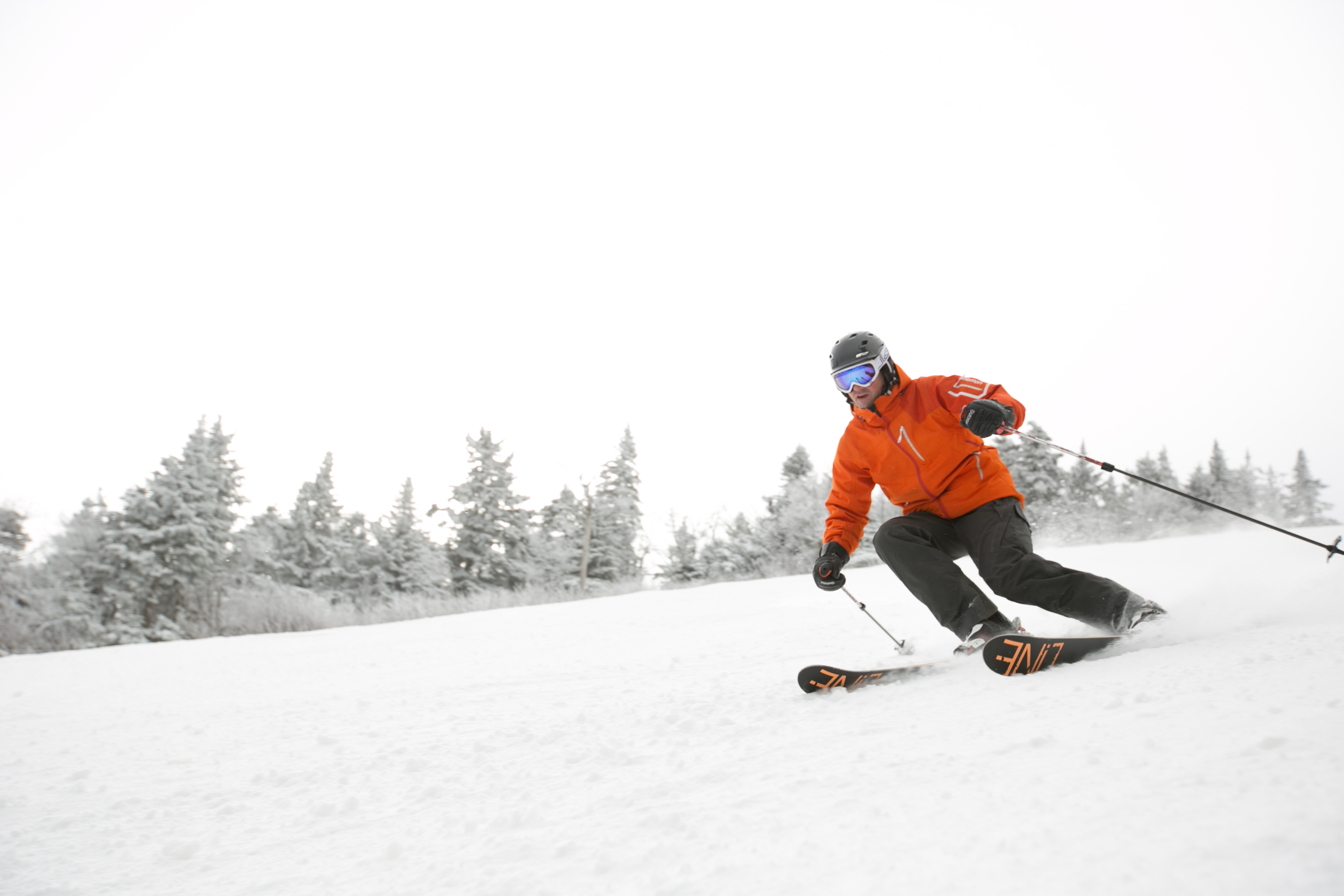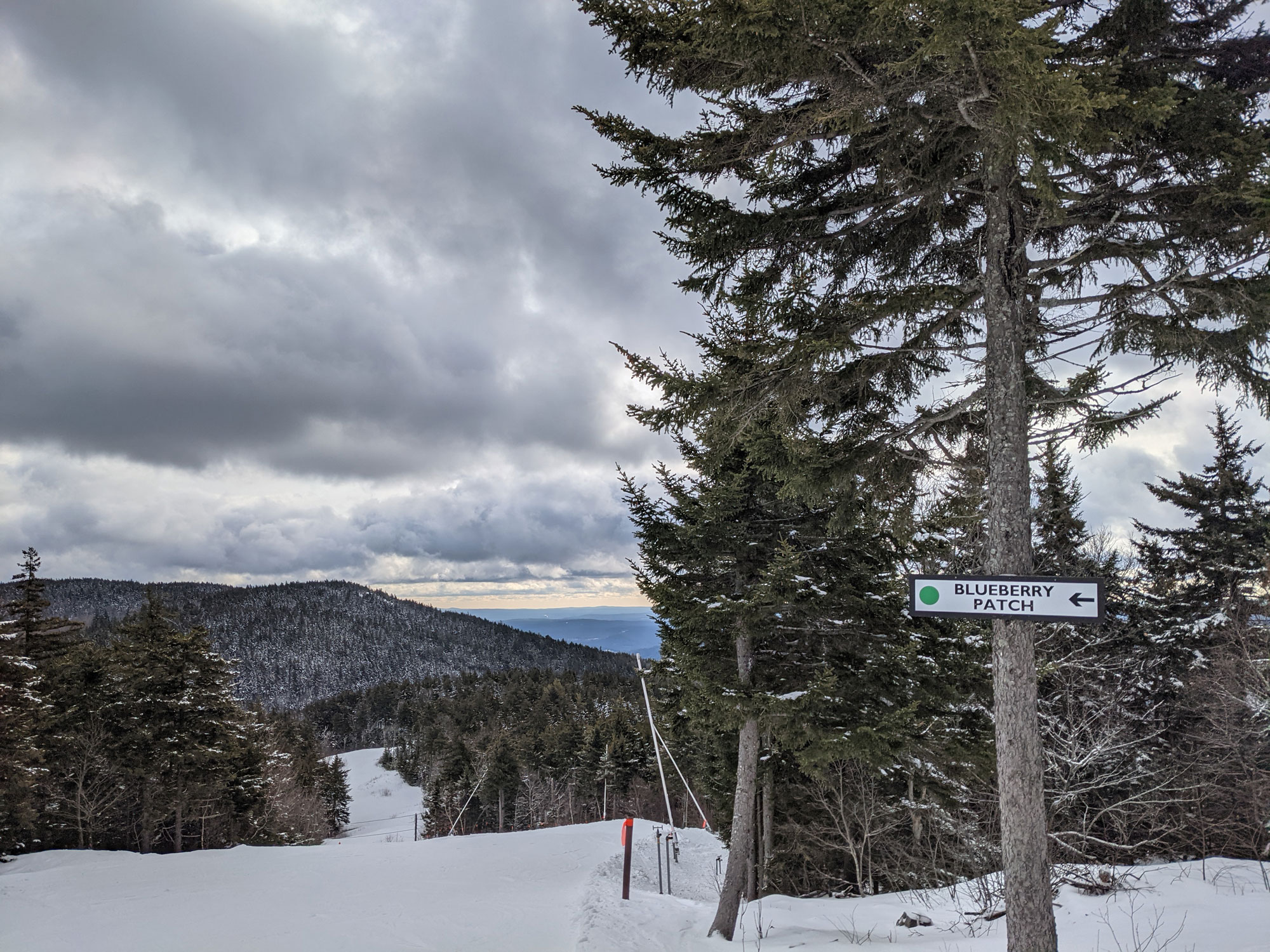Riding the lifts and harvesting pow at the resort is one of the best parts of winter. But nothing saps ski stoke faster than the cold. Since the best ski days are also often the coldest, staying warm while skiing or riding is critical to making the most of the day. Luckily, there are some simple steps you can take that will fend off Jack Frost and keep you bringing the heat on the slopes.

1. Start Warm
Starting warm is a recipe for staying warm. Bring your boots and layers into the house at night and if traveling to the resort keep them close to your car’s heater. Similarly, don’t wait until you’re freezing to use hand or foot warmers; Rather, drop them into your gloves and boots 20 to 30 minutes before hitting the slopes. This allows the warmers—along with your gloves and boots—to get nice and toasty before exposing yourself to the elements.
2. Dress in Layers
Everyone’s layering system is unique and will often change from day to day. That said, there are some guiding principles to follow:
- Avoid cotton: Cotton traps moisture and robs your body of precious warmth. Choose layers made from synthetics or wool which wick sweat away and dry quickly.
- Remember your underwear: A layering system is only as good as the foundation it’s built on—a bunch of fancy base layers are of a lot less value if they’re over cotton underwear.
- Opt for options: A handful of lightweight layers, instead of one or two bulky pieces, gives you greater flexibility to adapt to different conditions, both when you start out and throughout the day.
- Wear something windproof: Whether you’re sitting on the lift exposed to the elements or racing down your favorite run, the bitter-cold winter wind will quickly rob you of heat. Windproof outerwear (jacket and pants) will provide protection even on the most blustery days. FYI, the waterproof fabrics found on popular ski jackets are also windproof.
- Don’t forget waterproof layers: Nothing kills the psych faster on a pow day than getting soaked by falling snow while you sit on the lift. If it’s nuking snow during your next session, be sure to bring a waterproof jacket and pants. And since the chairlift seat is likely to be wet and chilly too, some extra insulation for your butt goes a long way.

3. Avoid Unnecessary Exposure
One of the best tricks for staying warm while skiing is to keep your skin covered. This is best done by eliminating gaps in your layers. For example, bibs can keep you from exposing your backside to bitter winter weather while adjusting your boots or strapping into your snowboard. Using the hood of your jacket is also a good strategy to eliminate the gap in coverage between your jacket and helmet and has the added bonus of trapping heat around your head and face—your most exposed areas while skiing.
Gloves or mittens with a gauntlet are a good way to eliminate the gap between where your jacket ends and your gloves or mittens begin and are generally warmer than under-the-cuff options. A neck gaiter, balaclava, or a combination of the two is useful for covering up your exposed neck area. The best systems cover your mouth and nose when it’s really frigid out, but still allow you to exhale without fogging up your goggles.
4. Buy (or Rent) Boots that Fit
Too-tight boots will cut off circulation and have your feet feeling like blocks of ice in no time. Leave yourself a little wiggle room, literally, so you can move your toes around and create blood flow. Also, avoid bearing down on buckles which can constrict blood flow and cause cold feet. If you prefer to ski with your boots buckled tight, get in the habit of loosening them up in the lift line.
It might seem counterintuitive, but the thickest socks are often not the warmest. Too-thick ski socks can also constrict space in the boot, hamper blood flow, and result in frozen feet. For these reasons, ski socks are generally relatively thin and made from a quick-drying synthetic material or wool. But whatever you wear, have your boots molded to those specific socks, so you can be sure they’re not too cramped.

5. Mittens are a Must-have
Mittens are the go-to choice for keeping your digits cozy. They are warmer than gloves, have less outside surface area and fewer seams than gloves, and allow your fingers to keep each other warm. A thin pair of liner gloves worn under mittens provide the dexterity you need for adjusting your boots or grabbing an Insta-worthy shot of your buddy getting sendy, while also providing maximum warmth.
6. Wear a Helmet
There are numerous reasons to wear a ski helmet and while safety steals the spotlight, helmets are also both warmer and more windproof than hats. Helmets are ubiquitous on today’s ski slopes and come in styles and sizes to suit almost everyone. Pair a helmet with a thin balaclava or beanie to boost its warmth on super-cold days.
7. Keep Moving
Your body generates a lot of heat while moving and getting stuck standing in lift lines is one of the fastest ways to get that frosty feeling. Some favorite tips for skiing more and standing around less are to hit the slopes while they’re less crowded (early or late in the day and around lunchtime) or to ride less popular (often older) lifts.
Stuck riding a busy lift? Move around a bit. Swinging your arms—careful with your poles!—can get the blood moving and help you warm up, as can working on your après ski dance moves.

8. Fuel the Fire
Skiing burns a fair amount of calories. An adult weighing 150 pounds can burn anywhere from 250 to 600 calories per hour and a 200-pound adult can burn about a third more than that. In addition to providing energy, your body also burns calories to keep warm in the cold. Eat a good breakfast and pack your pockets with high-calorie snacks that won’t freeze so you can graze throughout the day.
9. Go Inside
It’s tough to leave the slopes, but sitting in a warm lodge or in front of the fire for a few minutes can warm you up fast and have you back on the mountain in no time. A hot drink or soup can also provide a nice morale boost and help warm you up from the inside out.
10. Think Warm Thoughts
While it’s not advisable to let your mind drift to thoughts of the beach while blasting down a black diamond, it’s also not great to obsess over the cold. Think warm thoughts, focus on what you’re doing, and keep in mind how great the skiing is, not on how cold it is outside.
There are numerous ways to stay warm while skiing and the most dedicated stay on the slopes even in the most arctic weather. That said, the reason to ski is for fun and if it’s so cold that you’re no longer enjoying yourself or feel like you’re risking frostbite, there’s no shame in calling it a day.
Tim Peck and Doug Martland
Tim and Doug met long ago at the Eastern Mountain Sports in Canton, Massachusetts. Bonding over a love of slick Quincy Quarry granite, White Mountain sufferfests, and scheming up adventures while folding tee-shirts, today Tim and Doug collaborate to write about their favorite outdoor activities and occasionally get nostalgic about tee-shirt tables.
Related Posts
April 2, 2024
10 Tips for Mountain Biking Etiquette During Mud Season
One rough spring could ruin the…




